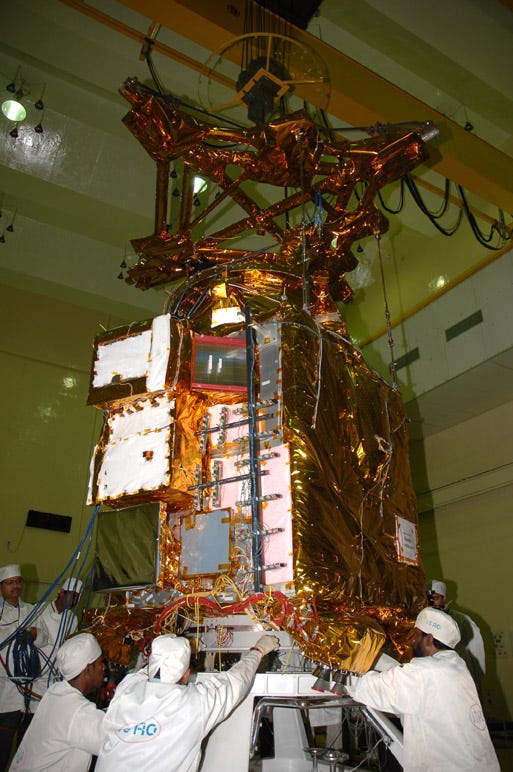Oh, hiding away, eh?
The solar wind delivers hydrogen, usually discouraging the oxidation of iron into hematite on the lunar surface. However, each full moon finds our planetary companion behind the Earth, where it is protected from the solar wind. These monthly reprieves from the bombardment of hydrogen creates periodic times when oxygen can react with iron, producing hematite, researchers theorized.
“The lack of atmosphere on the Moon allows solar wind (most of which is [hydrogen]) to reach the lunar surface and be implanted into the top tens to hundreds of nanometers of layer of surface grains,” researchers describe in an article published in the journal Science Advances.
When oxidation nibbles more slowly — more delicately, like a tortoise — at the world around us, without a flame, we call it rust and we sometimes scarcely notice as it goes about its business consuming everything from hairpins to whole civilizations. ― Alan Bradley, A Red Herring Without Mustard
The other critical ingredient for rust is water. And, although the Moon possesses water ice at its poles, these hematite deposits were separated from these lunar glaciers. Investigators suggest water on the surface of the Moon may be kicked up by fast-moving dust particles traveling through space. When this occurs when the Moon is shielded by Earth, hematite could, potentially, form. This new study might also suggest how water found on other small, airless bodies like asteroids may have been created.
“It could be that little bits of water and the impact of dust particles are allowing iron in these bodies to rust,” Fraeman said
Chandrayaan-1 launched on October 22, 2008, kicking off India’s first mission to Moon. The spacecraft orbited the Moon at an altitude of 100 km (62 miles), examining the lunar surface with an array of 11 instruments. Following the completion of all its scientific goals in May 2009, the orbit of the spacecraft was raised to 200 kilometers (125 miles). Ground controllers lost contact with the spacecraft at the end of August 2009.
The upcoming Lunar Trailblazer mission to the Moon, currently being developed by JPL and Caltech, will explore deposits of water ice on the Moon, potentially answering the mystery of hematite on the lunar surface.
This article was originally published on The Cosmic Companion by James Maynard, founder and publisher of The Cosmic Companion. He is a New England native turned desert rat in Tucson, where he lives with his lovely wife, Nicole, and Max the Cat. You can read this original piece here.
Astronomy News with The Cosmic Companion is also available as a weekly podcast, carried on all major podcast providers. Tune in every Tuesday for updates on the latest astronomy news, and interviews with astronomers and other researchers working to uncover the nature of the Universe.

